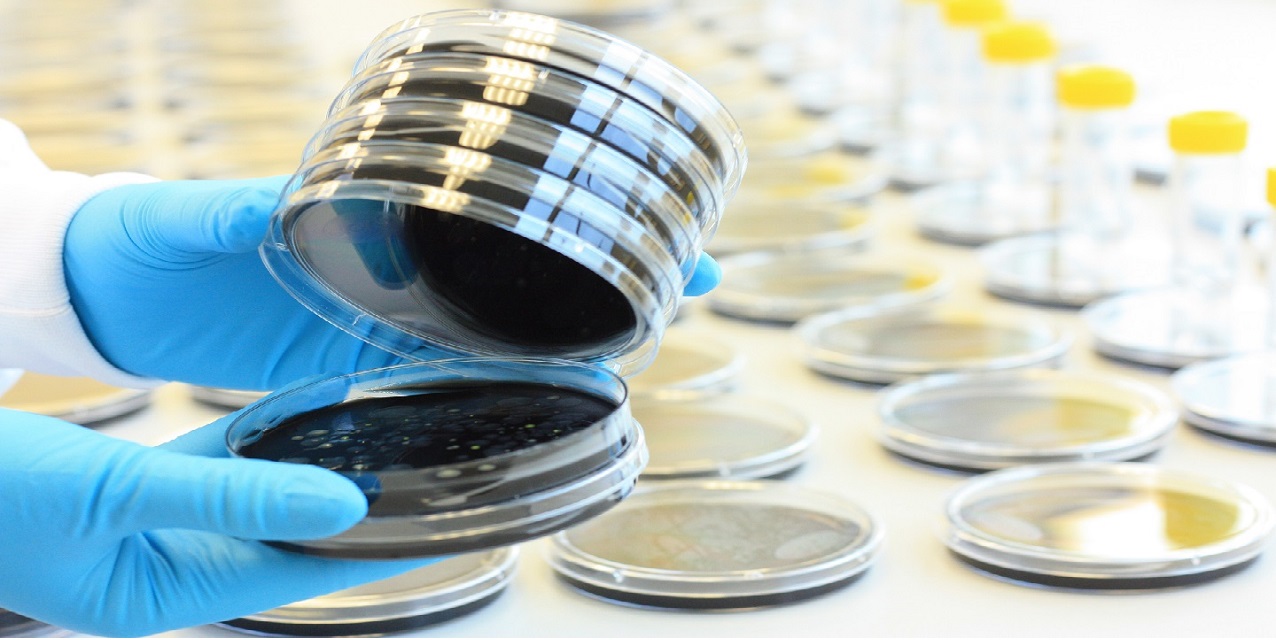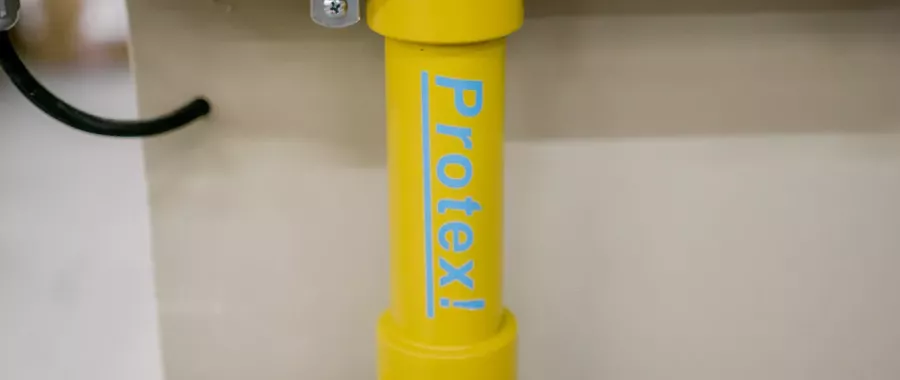ESG - now SOCOTEC - has played a key part in supporting Chilterns MS Centre in meeting regulatory requirements and preventing Legionella contamination through its Protex! water disinfection system.
Summary of works
Project: Prescribing Protex!
Client: Chiltern MS Centre
Start Date: October 2012

Case Study
Turning On The Tap

Caused by inhalation of Legionella bacteria, Legionnaires’ disease poses a significant risk to human health, with up to 400 cases in the UK every year. Unless correct treatment is carried out, the bacteria can thrive in the hot and cold water systems commonly used in large developments. This makes it crucial that all building owners, in both the private and public sectors, do everything they can to comply with regulations and keep their occupants safe.
The Chilterns Multiple Sclerosis (MS) Centre is a new healthcare facility, with a state-of-the-art base in Wendover, Buckinghamshire. It looks after more than 300 patients every week, providing care ranging from neuro-physiotherapy and oxygen treatment, to reflexology – all to boost the quality of life of people living with MS.
As a healthcare facility with water outlets throughout the building, ranging from kitchen taps, to bathroom showers, the centre must do all it can to prevent Legionnaires’ disease in order to safeguard the wellbeing of employees, patients and visitors. During the construction of the new site, when specifying measures for the hot water system, the centre wanted to try more environmentally responsible solutions to successfully manage Legionella risk, rather than traditional chemical methods.
Caused by inhalation of Legionella bacteria, Legionnaires’ disease poses a significant risk to human health, with up to 400 cases in the UK every year. Unless correct treatment is carried out, the bacteria can thrive in the hot and cold water systems commonly used in large developments. This makes it crucial that all building owners, in both the private and public sectors, do everything they can to comply with regulations and keep their occupants safe.
The Chilterns Multiple Sclerosis (MS) Centre is a new healthcare facility, with a state-of-the-art base in Wendover, Buckinghamshire. It looks after more than 300 patients every week, providing care ranging from neuro-physiotherapy and oxygen treatment, to reflexology – all to boost the quality of life of people living with MS.
As a healthcare facility with water outlets throughout the building, ranging from kitchen taps, to bathroom showers, the centre must do all it can to prevent Legionnaires’ disease in order to safeguard the wellbeing of employees, patients and visitors. During the construction of the new site, when specifying measures for the hot water system, the centre wanted to try more environmentally responsible solutions to successfully manage Legionella risk, rather than traditional chemical methods.
To achieve these goals, the centre’s specifiers began working with ESG in 2012, making use of its innovative Protex! Electrolytic Disinfection (ED) technology, which treats water using a small electric current. The centre also took part in a scientific study carried out by Dr Giovanna Cossali, a PHD graduate from Brunel University in London, to determine the effectiveness of Protex! for the management of Legionella risk.
Understanding Legionella
Legionella bacteria are widespread in nature and commonly found living in freshwater lakes and rivers, as well as man-made reservoirs - such as cooling towers, and buildings’ hot and cold water storage systems.
In addition to essential nutrients, the organism requires temperatures between 25°C and 42°C to thrive. As such, the occurrence of scale, sediment and organic matter in pipework and plumbing can make a building’s hot water system the ideal environment for Legionella to thrive. Moreover, low water demand at a particular outlet can lead to water stagnation and the formation of biofilm – a thin coating of bacteria – in pipework, which can further encourage the growth of pathogens. If appropriate measures aren’t in place, bacterial contamination can occur when water is in transit, storage, or via backflow from non-potable water systems, posing a risk to the health of building occupants.
Under the UK Water Supply (Water Fittings) Regulations 1999, property owners and facilities managers are responsible for maintaining the water quality in non-domestic buildings. They have a legal duty to safeguard a building’s water users from contracting any disease by identifying and managing sources of risk, and keeping records of maintenance and control routines.
The approved code of practice for Legionella management (ACoP L8 and Technical Guidance HSG274) requires regular flushing of water systems and, in the case of healthcare environments, that water temperatures be maintained at 60°C to prevent bacterial growth in water systems. It also stipulates that duty holders of buildings with large-scale water systems must undertake regular Legionella risk assessments, carried out by a person with the necessary training, knowledge and expertise in Legionella management, either within the organisation or from an appropriate third party.
ESG has played a key part in supporting Chilterns MS Centre in meeting these regulatory requirements and preventing Legionella contamination through its Protex! water disinfection system.
The Right Protection
ESG’s relationship with Chilterns MS Centre began in October 2012, when the company installed its Protex! ED technology at the health facility.
Developed by ESG, Protex! disinfects water by electrolysis, using a direct electric current to kill any pathogens by generating disinfectants from the chloride ions naturally present in the water. This also provides the residual disinfection needed to inhibit bacterial growth.
Requiring minimal maintenance and no additional chemicals, the product is more economical than traditional methods of water treatment, and is safer to operate as there is no requirement to handle or store chemicals. Incorporated into the hot water system at Chilterns MS Centre, and used in addition to water heating and regular flushing, Protex! played a significant role in helping the facility manage Legionella risk.
As part of the scientific trial, ESG worked in collaboration with Brunel University to evaluate the use of Protex! in the hot water system at the Chilterns MS Centre. This involves an ongoing trial run by Dr Giovanna Cossali, and overseen by Professor Tassos Karayiannis, Dr Edwin Routledge, and Martin Ratcliffe, carrying out long-term monitoring of the solution’s performance.
Collecting The Results
The team at Brunel University has been monitoring the device performance by taking monthly samples from the hot water systems at Chilterns MS Centre from May 2013.The samples were tested for levels of Legionella and Pseudomonas, another water-borne bacterial pathogen by an independent laboratory.
Samples taken prior to the installation of Protex! did not identify Legionella anywhere in the hot water system, as would be expected in such a new building. However, high concentrations of Pseudomonas were recorded in all samples, suggesting a problem in the recirculation loop, as well as a local outlet problem. The bacteria high counts were unanticipated because the building was relatively new, temperatures were maintained across the whole hot water system and a flushing regime of underused outlets was carried out regularly.
After Protex! was switched on, however, investigators found that, over the course of the testing period, there was a 96-99% reduction in bacteria levels and Pseudomonas levels. The under-used outlet also showed a considerable decrease in pathogen counts, demonstrating the effectiveness of ED in mitigating the impact of low water demand and stagnation.
Significantly, Legionella was not detected in any of the samples pre or post-flush. This suggested that ED was highly successful at preventing the organism from establishing itself in the hot water system.
Keeping Control
After 12 months of continuous operation, Protex! was intentionally switched off for one week in October 2013 to determine how bacterial levels would respond. ESG tested the hot water system prior to switching the technology back on, and recommenced monthly samples. The investigation found that, while there were no apparent changes to total viable counts (TVCs) of bacteria in pre and post-flush samples, Legionella and Pseudomonas were both detected at levels above control limits, suggesting that the organisms did respond to the removal of ED.
At the end of a year-long study, investigators concluded that Protex! ED technology is highly effective in achieving even the stringent levels of water disinfection required in healthcare facilities, and recommended it for use in both medical and other non-domestic buildings. As a result of the researchers’ positive findings, the solution continues to play a significant role in managing Legionella and Pseudomonas risk at Chilterns MS Centre.
The Benefits of Protex!
Aaron Cox, business manager at Chilterns MS Centre, said: “No matter what sector your organisation is operating in, it’s crucial to ensure you’re doing all you can to protect your employees and anyone else visiting your premises from anything that could impact on their safety, including Legionella. This is especially true in healthcare buildings, which are used every day by patients that are more susceptible to infection.
“The innovative water treatment technology and comprehensive monitoring support provided by ESG and Brunel University have enabled us to continue to meet rigorous regulatory requirements.
“With this help in place, we can be sure that our water systems offer the highest standards of hygiene, keeping our patients and staff safe, as they have a right to expect in the healthcare environment.”
Giovanna Cossali added: “As our monitoring at Chilterns MS Centre has shown, with ED technology, it is possible to effectively control Legionellain hot water systems. In addition to the Wendover MS centre trial we have carried out numerous laboratory experiments proving that Protex! is also effective at lower temperatures. At present, we are looking for a building where we could lower the temperatures safely.
“Protex! can do more than allow building owners to be sure they are safeguarding the wellbeing of the people using their development. It can also offer the potential for non-healthcare premises to reduce their water heating requirements, which can lower energy usage, cutting their carbon footprints and enhancing sustainability.”
Mick Pratt, commercial director, Built Environment Services, at ESG, concluded: “Developing new solutions to address the challenges of infection control is crucial to ensure we continue to uphold the highest levels of safety in our hospitals and medical centres.
“As the research has shown, new technologies can play a vital role in helping us protect the public from potential Legionella risks, while reducing our dependence on traditional chemical introduction methods, which is a big win for the environment too.”





